The Afghan connection
by Colin Greenwood
Australian Shooter November 2001
Wyllie - the man, the hunter, the gun
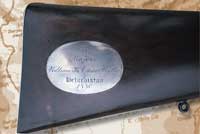
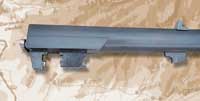
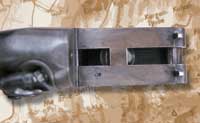 In the mid to late 19th century, Britain ruled one third of the world's land mass and continued to expand in many areas. Despite the myths of Hollywood, British Enfield, Snider and Martini-Henry rifles saw infinitely more action than the weapons of any other nation and no part of the British Empire was in turmoil for as long as India's North West Frontier, the land that lay between British India proper and the independent state of Afghanistan.
In the mid to late 19th century, Britain ruled one third of the world's land mass and continued to expand in many areas. Despite the myths of Hollywood, British Enfield, Snider and Martini-Henry rifles saw infinitely more action than the weapons of any other nation and no part of the British Empire was in turmoil for as long as India's North West Frontier, the land that lay between British India proper and the independent state of Afghanistan.
Britain did not want to conquer Afghanistan but sought to impose their influence on the rulers. Russia had its eyes on India, the jewel in the British Crown and the security of India depended on keeping the North West Frontier safe. There was a problem with tribesmen like the Afridi, the Pathans and other mountain men who refused to become subjects of the British Empire. They were tough fighters, well armed, often with weapons stolen from the British but also with arms made by their own kinsfolk in primitive workshops. In relatively small numbers in their own mountains they often fought the British army to a standstill. To defend that North West Frontier, the British had elements of the British army, the Indian army usually commanded by British officers, and a number of flamboyant and extremely effective irregular units.
Action on the North West Frontier was continuous from the early 1800s and did not end with independence from the British. For more than 150 years, the British were continuously involved in minor actions interlaced with larger actions such as the several advances to and retreats from Kabul, themselves epics involving almost unbelievable courage, fortitude and folly in about equal proportions. There were major engagements in the Chitral, Tirah, Malakand areas and field forces were assembled to deal with those and other uprisings. Winston Churchill took part in the Malakand Campaign of 1897. He later described the Pathans as having, "The ferocity of the Zulus, the craft of the Redskin and the marksmanship of the Boers."
Added to all the direct action was the intrigue among the various tribes with chiefs competing for power. The Afghans and the hill tribes were almost continually at war among themselves, with feuds of minor and major proportions. Those feuds and rivalries could be and were exploited by the British Political Service, but often feuds were put aside when the tribes came together to fight the British.
Into that North West Frontier came William Hutt Curzon Wyllie. The son of a general, he was born in 1848 and educated at Marlborough and the Royal Military Academy at Sandhurst. He was commissioned into the 106th Regiment of Light Infantry in 1866 and served for a period with the Gurkhas.
In 1879 he was transferred to the Political Department and served in Baluchistan during the Afghan War of 1879-80, during which Lord Roberts marched an army to Kabul under almost unbelievable conditions, secured that city and eventually placed a friendly ruler in power. But when Afghanistan's second city, Kandahar, was besieged by a rival for the throne, the British and Indian armies undertook a forced march of more than 300 miles of some of the worst country in the world under constant attack from tribesmen. They then defeated the much larger force that was investing Kandahar. That city was later handed back to Afghanistan and the subsequent treaties did much to secure the North West Frontier of India.
Curzon Wyllie's role in this action was vital, though it was not in frontline action. He was sent to secure the lines of supply and to obtain food and forage for the British army from the rulers of adjoining states with whom he had established good relationships. He was rewarded for his services with an appointment as a Companion of the Most Eminent Order of the Indian Empire (CIE).
He subsequently held various political posts with the Government of India before returning to England in 1901 as Political Aide-de-camp to the Secretary of State for India. By then he was Lieutenant Colonel Sir William Curzon Wyllie and had been invested Knight Commander of the Most Eminent Order of the Indian Empire (KCIE) and Commander of the Royal Victorian Order (CVO). Both these prestigious Orders are for political or civilian services to the Crown.
On July 2, 1909, Sir William Curzon Wyllie attended an 'at home' of the Indian Association at the Imperial Institute in London. As he left with his wife, an Indian, Doctor Cawasjee Lalcaca, accompanied him. Suddenly a young Indian emerged from the crowd and rushed forward brandishing a revolver from which he fired four shots into Curzon Wyllie's head at very short range. A fifth shot hit the Colonel in the body as he fell dead and the sixth killed Dr Lalcaca who tried to intervene. Two bystanders fought the assassin to the ground.
Twenty-two year old Nardar Lal Dhingra was one of four brothers of a respected Punjabi family. Two of his brothers were doctors and the other a lawyer. Nardar Lal was the black sheep who had travelled to London and become involved with a group of young political extremists. When police searched the house where this group met, they found propaganda material relating to the 'Sons of Siva'. The evidence suggests that this group incited this young impressionable man to the assassination, but if that is so, none of his co-conspirators were arrested.
The assassin was arrested on the spot and, in the face of the overwhelming and unchallenged testimony of eyewitnesses, was convicted by a jury of the murder of Curzon Wyllie on July 23, three weeks after the event. At the end of a short trial in which the assassin declined to question any witnesses, he was sentenced to death. Dhingra was hanged at Pentonville on August 20, 1909, just 51 days after the assassination. Commenting on the speed of British justice in those far-off days, the Milwaukee Sentinel commented that, "It may be that the English style of justice is too swift, but in America the ends of justice are too frequently defeated and society is imperilled because the assassin is turned loose."
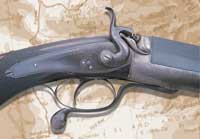
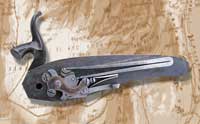
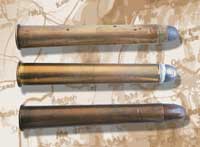 During his time in India, Curzon Wyllie undoubtedly took advantage of the opportunity to hunt. It was the traditional pastime of the British Officer in India or Africa. If, as we have said, British military arms saw more action than those of virtually any other country, then British sporting rifles were also world leaders. As a result of his exploits in the Afghan War of 1879-80, Curzon Wyllie was presented with a sporting rifle. On the butt is a large silver oval bearing the inscription, "To Major William H Curzon Wyllie, Baluchistan, 1880." We do not know who presented the rifle but at that time, Wyllie was in the political service on the staff of Sir Robert Sandeman and he may have marked his appreciation.
During his time in India, Curzon Wyllie undoubtedly took advantage of the opportunity to hunt. It was the traditional pastime of the British Officer in India or Africa. If, as we have said, British military arms saw more action than those of virtually any other country, then British sporting rifles were also world leaders. As a result of his exploits in the Afghan War of 1879-80, Curzon Wyllie was presented with a sporting rifle. On the butt is a large silver oval bearing the inscription, "To Major William H Curzon Wyllie, Baluchistan, 1880." We do not know who presented the rifle but at that time, Wyllie was in the political service on the staff of Sir Robert Sandeman and he may have marked his appreciation.
The single barrel break open rifle is built on a Jones rotary under lever action. Birmingham gunmaker Henry Jones patented his double screw grip under lever on September 7, 1859 (patent 2040). His action is to be found on the very best guns and rifles as well as many inexpensive models. A large number of makers took advantage of the fact that Jones did not renew his patent in 1862 for lack of the £50 stamp duty necessary to keep it in force.
The action requires that two bites be cut into the lumps under the barrel. Protruding from the top of the under lever pivot is a circular stud that is cut out so that its top surfaces mate with the bites when the gun is closed, their slightly sloping surfaces forcing the barrels down and back into battery. When the gun is opened, a sloping face beneath the forward face of the locking stud mechanically starts the opening movement. A stud set into the top of the action body pushes back the stem of the extractor to give primary extraction. This movement is aided by the dropping of the barrel and so is very positive in clearing the fired case. The barrel must be closed manually before the lever can be rotated to lock into the two bites. It is a very strong and reliable action, though it is rather slow to operate.
The back action lock has a rebounding external hammer, the lower limb of the V spring being used to pull the hammer back clear of the striker after a shot. This is both a safety device and an aid to reloading, keeping the unsprung striker clear of the primer when the gun is opened or closed. The lock plate has only simple border engraving and bears the famous name, 'Wilkinson & Son', which also appears on the top rib of the barrel with the address, '27 Pall Mall, London'.
James Wilkinson succeeded to the business of the famous gunmaker Henry Nock in 1805 and with his son was in business in Pall Mall. The company concentrated on swords to the eventual exclusion of guns and in 1891 became the Wilkinson Sword Company. The company still exists, making the highest quality swords at 19/21 Brunel Road, London, W3 7UH.
Somewhat strangely, this rifle does not feature in their register of sales and it may be that it was shipped to an agent in India as one of a batch that was not entered in the domestic sales register. One source of further information about the rifle was closed off.
The quite massive barrel is 271/2 inches long, round, tapered with a top flat that is cross-hatched except for the area in front of the rear sight, which carries the name and address. It is fitted with a large single stand rear sight and a bead foresight. Its deeply cut rifling is well suited to black powder. Inside and out the barrel is in very good condition.
The walnut stock has a comfortable cheekpiece and a nicely chequered pistol grip with a steel grip cap. The steel buttplate is smooth. The fore-end is secured by a snap fastener and has a horn tip. There is a sling eye on the barrel and also one screwed into the underside of the butt. The rifle is in very good condition and comes to the shoulder very nicely.
The rifle is chambered for the then very popular 450 Express or 450 31/4-inch cartridge, which was a popular big-game cartridge for many years. The black powder version utilised 120 grains of black powder with bullets of 270, 310 and 365 grains. The bullets were usually paper patched and included solid, hollowpoint and copper-tubed versions. Factory ballistics showed 1975fps for 2340ft-lb of energy at the muzzle with the 270-grain bullet and 1700fps for the same muzzle energy with the heavy 365-grain bullet. The later 450x31/4 Nitro Express developed much more velocity and energy using a 480-grain bullet. It certainly should not be used in older black powder rifles.
This rifle is not shot very often because of its historical importance, yet it almost demands to be taken out occasionally and put through its paces. Reloading is relatively simple. Basic cases for the 450x31/4-inch cartridge are available from Bruce Bertram in Victoria in the standard (sometimes called thin) rim version. We selected Lee's 340-grain 450 (0.457" diameter) bullet loaded ahead of 120 grains of Curtis and Harvey's No 4 black powder. Dies were made by North Devon Shooting Supplies, 3 North Street, Braunton, North Devon, EX33 1AJ (+01271 813624). The resulting cartridge is most impressive in appearance and in performance.
The single rear sight suggests that it was made for short-range work and at 50 yards (45.7m) it is necessary to hold a very fine sight, with the bead of the foresight deep in the V of the back sight. Perhaps our Victorian forbears had better eyesight than we have or perhaps optical sights have spoilt us, but those fine bead sights are not easy to see without special prescription spectacles.
When the 450x31/4-inch is fired while sitting at a bench and concentrating on group size, a shoulder pad or recoil shield is a welcome accessory, but shooting from a standing position, as one should be with such a rifle, it is quite a gentle giant, the recoil giving that longer push and allowing the shooter to roll with it. Ten shots from a bench is enough at any one time, but there is no limit to the pleasure of shooting the rifle from a standing position, taking snap shots at various targets. It requires some discipline to put the rifle away again while cartridges remain for shooting.
The standard of accuracy is not that which a modern rifle would give and we have concluded that the rifle was regulated for a lighter bullet than the one we have been using, so we still have some work to do, both in further research into the original owner of the rifle and into the best possible loads.
How many times have we looked at older guns and wished they could tell their own story? In this case a book of newspaper clippings about the assassination accompanied the rifle and they told us a lot, though many blanks remain.
It is now unfashionable to be proud of the British Empire, but I am unfashionable. I am proud that a country as small as Britain could found the greatest empire the world has ever known - an empire that was not merely great in size, but great in traditions, in honour and in service. Britain was the country that gave the world parliamentary democracy, created the right to keep arms and helped many of the world's people move forward.
Today it is a country that seems to have lost all sense of democracy, honour and service. It is a country of many politicians but no statesmen. It is a country where those who govern have so lost trust in their own people that they now ban the possession of all handguns. Perhaps it is well that I can look back to the days when the Curzon Wyllies and the like were building and protecting the Empire.
